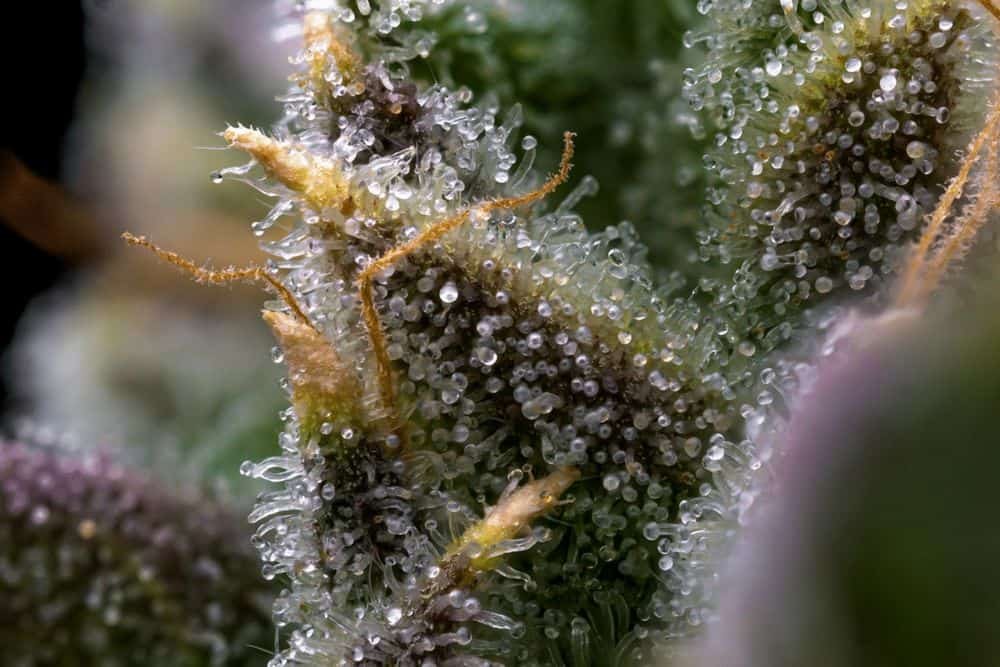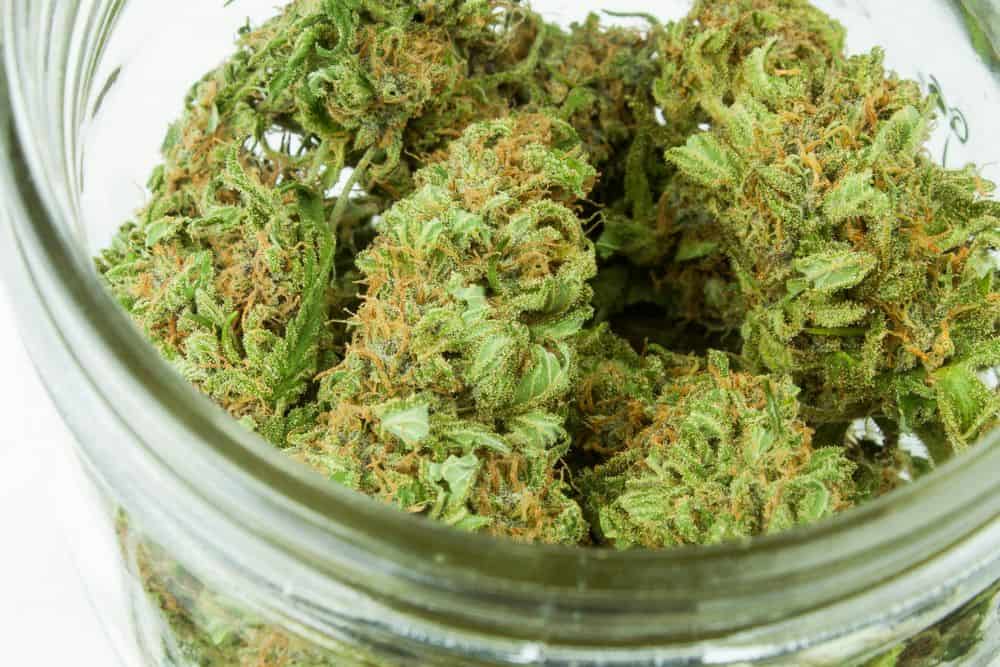 Everyone knows about THC.
Everyone knows about THC.
And most know about CBD.
But those two are far from the only cannabinoids.
And the others have some great benefits, too.
Some of them are available as supplements, while others are not.
Some have barely been researched at all, so we’re not even sure what benefits they offer.
Keep reading to learn all about the lesser-know cannabinoids in cannabis, including what benefits they may offer.
Marijuana’s Lesser-Known Cannabinoids
One thing you’ll probably notice about all of the following cannabinoids is how similar their names are. It makes it hard to tell them apart. I guess that’s the reason for the abbreviations, but those are all quite similar, too!
Cannabigerol (CBG)

Cannabigerol (CBG) is often known as the mother of all cannabinoids because other cannabinoids are derived from its acidic form (CBGA). Compared to CBD, CBG is not much stronger. But the two cannabinoids work differently in the body.
Like CBD, CBG doesn’t make you feel high, especially since it is found only in small quantities in most cannabis strains. Exceptions to this are strains like Jack Frost CBG and Super Glue CBG, which are specially cultivated for their higher CBG content.
CBG has many health benefits, like reducing inflammation, pain, and nausea. However, commercially, it is quite rare, and expensive as well.
CBG is sometimes prescribed to treat conditions like glaucoma, inflammatory bowel disease, and bladder problems. It is also being studied for its effects on cancer cells and bacteria.
Cannabinol (CBN)
Cannabinol (CBN) is the weaker version of THC and is formed as THC ages and breaks down. Unlike non-psychoactive CBD, CBN can induce mild psychoactive reactions in larger doses.
CBN is often used to help with sleep and to reduce pain and inflammation. Learn about the benefits of using marijuana for sleep here. It can be especially beneficial if you want to try and microdose your cannabis.
Some studies have also shown that CBN has neuroprotective properties and can help delay the progression of ALS or amyotrophic lateral sclerosis, a disease that affects the brain and spine. Doctors also prescribe CBN for conditions like arthritis and insomnia.
Possible side effects of CBN are drowsiness, dry mouth, and dizziness. More research is needed to know the exact benefits, uses, and side effects of this cannabinoid.
Learn more about CBN and how it relates to THC and CBD in effecting weed potency in this article.
Cannabichromene (CBC)
CBC, or cannabichromene, is a non-psychoactive cannabinoid that has many potential health benefits, like anti-inflammatory, anticonvulsant, and antibacterial effects. It is useful in reducing pain, inflammation, and acne.
It may also help with depression by boosting certain chemicals in the brain. CBC is known to encourage the human brain to grow by increasing brain cells through neurogenesis.
CBC interacts with the endocannabinoid system by binding to receptors that control pain and mood. CBC is not stronger than CBD when it comes to alleviating pain. However, when it comes to treating acne, studies have shown CBC to be the stronger candidate.
You can take CBC and CBD together, since they augment each other’s effects. The combination might be effective for treating conditions like chronic pain and inflammation.
Cannabitriol (CBT)

Cannabitriol (CBT) is a non-psychoactive cannabinoid. It is also found to be effective at lowering eye pressure, making it a good option for treating glaucoma. CBT may even be better than CBD for this purpose.
While it is not necessarily stronger than CBD overall, CBT’s specific benefits for certain conditions, like glaucoma, make it a valuable choice for some people. Many enjoy CBT for its relaxing and health-boosting properties.
CBT vapes are becoming popular thanks to their many wellness benefits without intoxication, as well as their potential to reduce pain, inflammation, and stress.
Cannabinodiol (CBDL)
Cannabinodiol (CBDL) is a psychoactive cannabinoid, meaning it can make you feel high. This makes it different than CBD, which does not cause a high. Not much is known about CBDL because there has been very little research on it.
Scientists haven’t studied its effects or benefits as much as other compounds like CBD or THC. CBDL is not sold commercially because extracting it from the cannabis plant is difficult and expensive.
Since it is rare and hard to produce, you won’t find CBDL products in stores. More research is needed to understand its potential uses and effects.
Cannabicyclol (CBL)
Cannabicyclol (CBL) cannabinoid is believed to help stimulate appetite, aid sleep, and relieve pain. CBL has no known physiological effects, so it is considered non-psychoactive based on current research.
Its structure is similar to that of CBC (cannabichromene) and CBN (cannabinol), suggesting it may have anti-inflammatory, antibacterial, neurogenic (brain cell growth-boosting), and antiemetic (nausea-reducing) properties.
CBL’s potential therapeutic benefits include helping with sleep and reducing pain and inflammation, but more research is needed to fully understand its effects.
Cannabielsoin (CBE)

Cannabielsoin (CBE) is a non-psychoactive, natural cannabinoid and a metabolite of CBD. It was first discovered in 1973, but it was only after 1991 that scientists understood and recognized its relation to CBD.
CBE has neuroprotective effects that may help protect the brain and prevent diseases like Alzheimer’s and other neurodegenerative conditions. It may also help reduce pain (analgesic effects) and lower anxiety and stress.
While CBE shows promise for these benefits, more research is needed to fully understand its effects and how it can be used effectively. CBE products are often sold online in the form of tinctures, gummies, and edibles; however, their high price may deter most buyers.
Cannabidivarin (CBDV)
Cannabidivarin (CBDV) is a non-intoxicating, non-psychoactive cannabinoid compound that won’t make you feel high. The main difference between CBD and CBDV lies in their chemical structures.
CBDV has a propyl side chain, while CBD has a pentyl side chain. This variation in their molecular makeup leads to different effects and interactions within the body.
Early research suggests that CBDV can reduce the activity of certain nerve cells and may help with inflammation, seizures, pain, and other issues. By calming these nerve cells, CBDV might improve conditions like anxiety, insomnia, pain, PTSD, and depression. It shows promise as a treatment for these concerns, but more research is needed to understand its full potential and effectiveness.
Cannabigerovarin (CBGV)
Cannabigerovarin (CBGV) is a non-psychoactive compound found in cannabis. Very few studies have been conducted on it, but early research suggests that it might help with pain and inflammation. This makes it useful for treating conditions like fibromyalgia and arthritis.
Cannabigerovarin may also treat dry skin and reduce cancer cell growth in leukemia patients. Its pain-relieving effects could help patients undergoing chemotherapy or radiation therapy. Naturally, we need more research to confirm these benefits.
Cannabichromevarin (CBCV)

Cannabichromevarin (CBCV) is a rare and non-intoxicating compound found in cannabis. It is mysterious because there has only been one unsuccessful animal trial on it, so not much is known about it.
CBCV’s structure is nearly identical to that of cannabichromene (CBC), but it is 2 carbons shorter. While its specific benefits and uses aren’t well understood yet, researchers believe CBCV may have similar effects to CBC, such as antidepressant, anti-inflammatory, antimicrobial, anticancer, and pain-relieving properties.
Lesser-Known Cannabinoids: Final Thoughts
While the names and abbreviations of lesser-known cannabinoids like CBG, CBN, CBC, CBT, CBDL, CBL, CBE, CBDV, CBGV, and CBCV may make them difficult to tell apart, each possesses unique properties and potential health benefits.
From CBG’s anti-inflammatory effects and CBN’s neuroprotective properties to CBC’s role in neurogenesis and CBT’s potential in glaucoma treatment, these cannabinoids offer diverse therapeutic possibilities.
However, much of their potential remains underexplored due to limited research. As scientific interest grows, further studies are essential to fully understand and harness the benefits of these intriguing compounds.
Leave a Reply